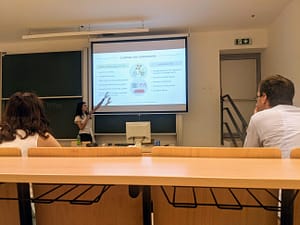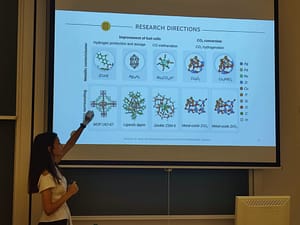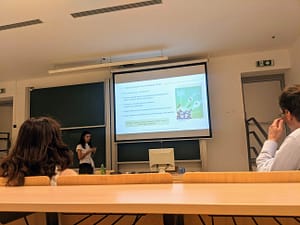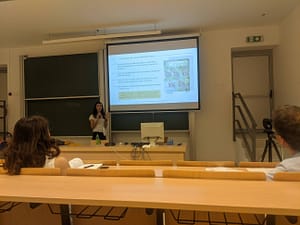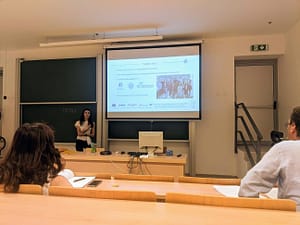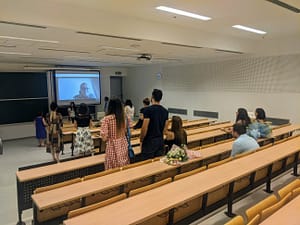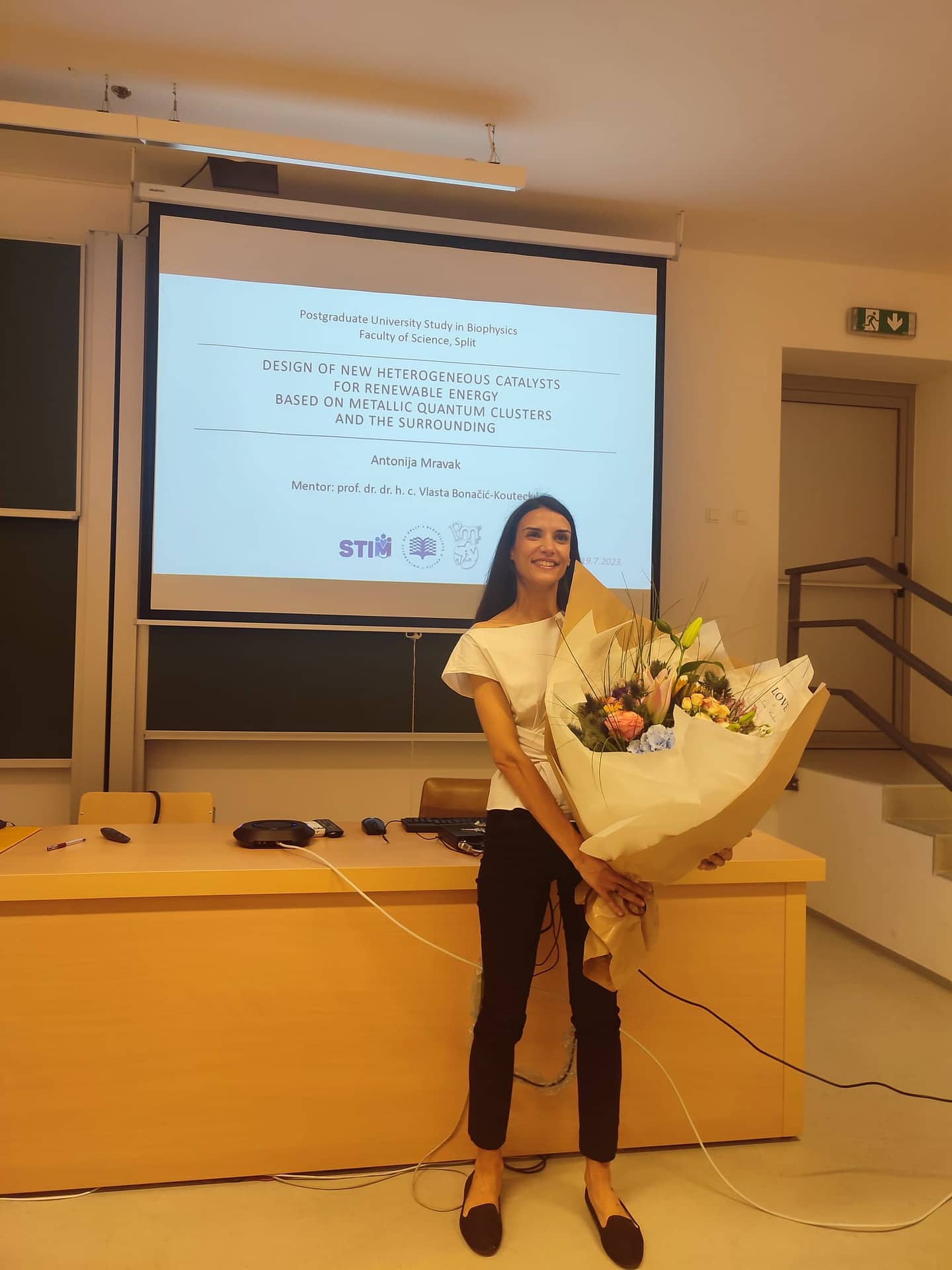Our colleague research assistant/PhD student Antonija Mravak, this year’s winner of the award “For Women in Science”, convincingly and successfully defended her PhD Thesis under the title:
DESIGN OF NEW HETEROGENEOUS CATALYSTS FOR RENEWABLE ENERGY BASED ON METALLIC QUANTUM CLUSTER AND THE SURROUNDING, on July 19, 2023, at the Faculty of Science in Split, in front of the members of the Supervisory Committee:
- prof. Ante Bilušić, PhD; Faculty of Science in Split, president,
- prof. Leandra Vranješ Markić, PhD; Faculty of Science in Split, member,
- prof. Štefan Vajda, PhD, Dr.habil.; J. Heyrovský Institute of Physical Chemistry in Prague, member,
- associate professor Larisa Zoranić, PhD; Faculty of Science in Split, substitute member.
Mentors:
prof. Vlasta Bonačić Koutecky – Center of Excellence for Science and Technology – Integration of the Mediterranean Region (STIM) at the Interdisciplinary Center for Advanced Science and Technology (ICAST) and prof. Mile Dželalija – Faculty of Science, University of Split.
ABSTRACT:
The thesis highlights the potential of metallic quantum clusters placed in various surroundings in the design of new classes of heterogeneous catalysts. In this context, new sustainable solutions are addressed through the design of materials for enhancement of fuel cell performance via production and storage of hydrogen as well as the elimination and utilization of carbon monoxide. In addition, catalytic systems for carbon dioxide conversion into useful products are proposed. Density functional theory (DFT) is used to predict the new catalysts by exploring a wide range of systems, providing an insight into the nature of active sites and the role of the surroundings. This is achieved through investigations of structural and electronic properties of the catalysts, as well as energetically favorable pathways leading to the desired products. The strategies for new material design are based on i) integration of a copper-based metallic center within the metalorganic framework and ligand protection of silver hydride cluster, ii) placing ligated ruthenium cluster inside the zeolite, and iii) depositing of monometallic and palladium-doped bimetallic copper clusters on metal oxide support. The results emerging from theoretical calculations are supplemented by experimental results obtained by our collaborators, enabling fundamental understanding and control of the function of new catalysts.
We bring part of the atmosphere of this intriguing stellar presentation of the PhD Thesis.
Well done Antonija, we are very proud and wish you much success in the future!
